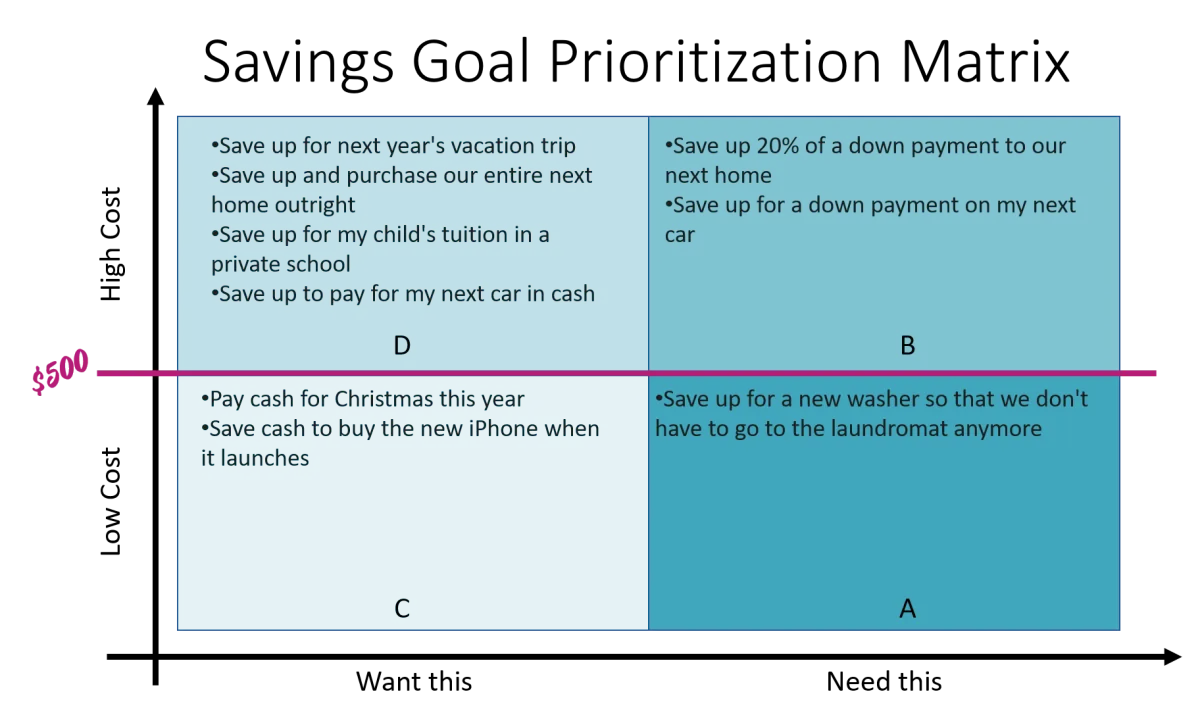Learn valuable tips and strategies on how to effectively save money for your child’s education. Discover smart financial planning methods to secure your child’s academic future without breaking the bank.
Importance of Saving for Education
Saving for your child’s education is one of the most important investments you can make. The cost of education continues to rise, and a college degree is becoming increasingly essential for success in today’s job market. By starting early and saving consistently, you can help give your child the gift of a bright future.
Here are some key reasons why saving for education is crucial:
- Rising Education Costs: College tuition fees have been increasing at a rate higher than inflation for decades. Saving early helps you stay ahead of these rising costs and makes education more affordable for your child.
- Competitive Advantage: A college degree often translates to higher earning potential and better job opportunities. Your child will be better equipped to compete in a globalized job market.
- Reduced Financial Burden: By saving for education, you relieve your child of the burden of student loan debt. This allows them to start their careers and adult lives with greater financial freedom.
- Greater Choice and Flexibility: A solid education fund gives your child more options when choosing a college or university. They can pursue their passions without being limited by financial constraints.
- Investing in Their Future: Education is an investment in your child’s future success and happiness. It empowers them with knowledge, skills, and opportunities to lead fulfilling lives.
Setting a Savings Goal

Saving for your child’s education is a significant financial undertaking. It requires careful planning, discipline, and a clear understanding of your financial goals. Setting a savings goal is the crucial first step in this journey.
To determine a suitable savings goal, consider these factors:
- Projected Education Costs: Research the potential costs of your child’s desired education. Consider tuition fees, accommodation, textbooks, living expenses, and other associated costs. Factor in potential inflation to get a realistic estimate of future expenses.
- Your Child’s Age: The earlier you start saving, the more time your investment has to grow. A longer time horizon allows you to benefit from compounding returns, where your earnings generate further earnings over time.
- Risk Tolerance: Your risk appetite will influence your investment choices. Higher-risk investments might offer potentially higher returns but also carry a greater chance of fluctuations in value.
- Financial Situation: Assess your current income, expenses, and existing savings. Determine a realistic amount you can comfortably contribute to your child’s education fund regularly.
Online calculators and financial advisors can be valuable resources in estimating future education costs and determining a suitable savings goal based on your circumstances. Remember, it’s advisable to set a realistic and achievable goal that aligns with your financial capabilities.
Choosing an Education Savings Plan
Saving for your child’s education is a significant financial goal, and selecting the right savings plan is crucial. With various options available, each having its own advantages and disadvantages, understanding your needs and researching thoroughly is essential. Here are some popular education savings plans to consider:
529 Plans
529 plans are state-sponsored savings accounts designed specifically for education expenses.
- Tax Advantages: Earnings grow tax-deferred, and withdrawals are tax-free when used for qualified education expenses like tuition, fees, room and board.
- Flexibility: While the beneficiary is typically a child, you can change the beneficiary to another eligible family member.
- Contribution Limits: Contribution limits are generally high, allowing for substantial savings over time.
Coverdell Education Savings Accounts (ESAs)
Coverdell ESAs are another tax-advantaged savings option for education expenses.
- Investment Choices: Coverdell ESAs offer a wider range of investment options compared to 529 plans, allowing for potentially higher returns.
- Contribution Limits: The annual contribution limit is lower than 529 plans.
- Income Limitations: Eligibility is based on income levels.
Custodial Accounts (UTMA/UGMA)
Custodial accounts, also known as UTMAs or UGMAs, allow you to save and invest on behalf of a minor.
- Control and Flexibility: You control the account until the child reaches the age of majority.
- Tax Implications: Earnings may be subject to taxation.
Savings Bonds
U.S. savings bonds can be a safe and low-risk investment option for education savings.
- Guaranteed Returns: Savings bonds offer a guaranteed rate of return.
- Tax Benefits: Interest earned may be tax-free when used for qualified education expenses, subject to income limitations.
Roth IRAs
While primarily designed for retirement savings, Roth IRAs offer some flexibility for education expenses.
- Tax-Free Withdrawals: Contributions can be withdrawn tax-free at any time, and earnings can be withdrawn tax-free after age 59 1/2 for retirement or qualified education expenses.
Finding Extra Money to Save

Saving for your child’s education can feel like a financial mountain to climb, but uncovering extra savings doesn’t have to be daunting. Here are some practical strategies to unearth hidden cash and boost your education fund:
1. Track Your Spending and Identify Leaks
You can’t fix what you don’t track. Use budgeting apps, spreadsheets, or even a good old-fashioned notebook to monitor your expenses for a month or two. Identify areas where you’re spending more than you realize and look for potential cuts. Those daily lattes or subscription boxes you barely use can add up quickly.
2. Embrace the Side Hustle
The gig economy is booming! Leverage your skills and interests to earn extra income. Consider freelance writing, graphic design, online tutoring, pet sitting, or driving for a ride-sharing service. Even a few extra hours a week can make a significant difference in your savings over time.
3. Sell Unused Items
One person’s trash is another’s treasure! Declutter your home and sell gently used clothing, electronics, furniture, or anything else collecting dust. Online marketplaces, consignment shops, and garage sales are excellent avenues for turning clutter into cash for your child’s education.
4. Reduce Housing Costs
Housing often takes the biggest bite out of our budgets. Explore options for decreasing this expense, such as downsizing, renting out a spare room, or negotiating a lower rent payment with your landlord. If you’re open to relocating, consider moving to an area with a lower cost of living.
5. Automate Savings
Make saving automatic! Set up regular transfers from your checking account to your dedicated education savings account. You can also explore “round-up” apps that round up your purchases to the nearest dollar and invest the difference. Automating your savings ensures consistent contributions without requiring constant effort.
6. Negotiate Lower Bills
Don’t be afraid to negotiate with your service providers. Call your internet, cable, and phone companies and inquire about lower rates or promotional offers. You might be surprised how much you can save with a simple phone call.
Using Tax-Advantaged Accounts
One of the smartest ways to save for your child’s education is to utilize tax-advantaged accounts. These accounts offer significant benefits that can help you grow your savings faster and reduce your tax burden. Here are some of the most popular options:
529 Plans
A 529 plan is a state-sponsored investment account specifically designed for education expenses. These plans offer tax-deferred growth and tax-free withdrawals when used for qualified education expenses like tuition, fees, books, and even room and board.
Benefits of 529 Plans:
- Tax advantages: Earnings grow tax-deferred and are tax-free when used for qualified expenses.
- High contribution limits: Contribution limits are typically high, allowing you to save a substantial amount.
- Potential for financial aid: 529 plans have minimal impact on financial aid eligibility.
- Control and flexibility: You maintain control over the account and can typically change beneficiaries if needed.
Coverdell Education Savings Accounts (ESAs)
Coverdell ESAs are another tax-advantaged option for education savings. They offer tax-deferred growth and tax-free withdrawals for qualified education expenses.
Benefits of Coverdell ESAs:
- Tax advantages: Similar to 529 plans, Coverdell ESAs offer tax-deferred growth and tax-free withdrawals for qualified expenses.
- Investment flexibility: Coverdell ESAs offer more investment options compared to 529 plans, allowing for potentially higher returns.
Considerations for Coverdell ESAs:
- Contribution limits: Contribution limits for Coverdell ESAs are significantly lower than those for 529 plans.
- Income limitations: Your eligibility to contribute to a Coverdell ESA depends on your modified adjusted gross income (MAGI).
Tips for Reducing Education Costs

Saving for your child’s education is crucial, but it doesn’t have to drain your bank account. Here are some effective strategies to reduce education expenses:
Start Early with 529 Plans and Educational Savings Accounts (ESAs)
The power of compound interest is your best friend when it comes to education saving. 529 plans and ESAs offer tax advantages that can significantly boost your savings over time. Start contributing early to maximize your gains.
Explore Scholarships and Grants
Scholarships and grants offer free money for education. Encourage your child to maintain good grades and pursue extracurricular activities to increase their eligibility. Explore a variety of sources, including:
- Merit-based scholarships: Awarded based on academic, athletic, or artistic achievements.
- Need-based grants: Provided based on financial need, often determined by the FAFSA.
- Private scholarships: Offered by corporations, foundations, and community organizations.
Consider In-State Public Colleges
In-state public colleges typically offer significantly lower tuition rates for residents. Encourage your child to consider these institutions as they often provide a quality education at a more affordable price.
Encourage Community College for the First Two Years
Community colleges can be a smart and cost-effective way to complete the first two years of a bachelor’s degree. Credits often transfer seamlessly to four-year universities, saving you thousands of dollars in tuition.
Reduce On-Campus Living Expenses
On-campus room and board can add up quickly. Explore alternatives like:
- Living at home: If feasible, living at home can significantly reduce expenses.
- Off-campus housing: Apartments or shared housing options can be more affordable than on-campus dorms.
Look for Tuition Payment Plans
Many colleges offer tuition payment plans that allow you to spread out payments over time, making college costs more manageable.
Utilize Tax Benefits and Credits
The government offers tax benefits, such as the American Opportunity Tax Credit and the Lifetime Learning Credit, which can help offset education expenses.
Encourage Part-Time Work and Internships
Part-time jobs and paid internships not only provide income but also valuable work experience that can benefit your child’s future career prospects.
Promote Textbook Savings Strategies
Textbooks can be a major expense. Encourage your child to:
- Buy used textbooks: Consider online marketplaces or campus bookstores.
- Rent textbooks: Explore rental options through services like Chegg or Amazon.
- Utilize library resources: Encourage them to take advantage of free library resources.
Encouraging Student Savings
While it’s fantastic to support your child’s future education financially, instilling healthy saving habits in them is equally important. Here’s how you can encourage your child to save for their education:
1. Open a Savings Account Together
Take your child to the bank and involve them in the process of opening a savings account. Explain the purpose of the account and how regular deposits, even small ones, contribute to their education fund.
2. Match Their Contributions
Motivate your child by matching a percentage of their contributions. For instance, you could match 50% of every dollar they save. This not only accelerates their savings but also teaches them the power of compound growth.
3. Set Realistic Savings Goals
Work with your child to set achievable savings goals. Instead of aiming for a large sum immediately, break it down into smaller, manageable targets. Celebrate these milestones to keep them engaged and motivated.
4. Encourage Part-time Jobs
As your child grows older, encourage them to take on part-time jobs or freelance work. This not only provides them with valuable work experience but also gives them a sense of ownership over their education savings.
5. Teach Budgeting and Financial Literacy
Equip your child with essential financial skills by teaching them about budgeting, saving, and responsible spending. Consider age-appropriate resources like books, games, or apps to make learning fun and engaging.
6. Lead by Example
Children often learn by observing their parents. Demonstrate healthy saving habits yourself and discuss your own financial goals with them. This reinforces the importance of saving and responsible money management.
Reaching Your Education Savings Goal

Setting up a savings plan for your child’s education is a significant step, but the real journey lies in reaching your financial goal. It requires commitment, discipline, and periodic adjustments along the way. Here’s how you can stay on track and ensure you’re financially prepared when your child is ready for higher education:
1. Track Your Progress Regularly:
Don’t just “set and forget” your savings plan. Regularly review your investment performance, assess your savings rate, and see if you’re on track to meet your target. This allows you to identify any potential shortfalls early on and make necessary adjustments.
2. Explore Additional Income Sources:
Consider supplementing your savings with additional income streams. Whether it’s a side hustle, freelancing, or part-time work, these extra funds can accelerate your progress towards your education savings goal.
3. Be Prepared for Unexpected Expenses:
Life is full of surprises, and not all of them are pleasant. Having an emergency fund alongside your education savings can prevent you from dipping into your child’s college fund when unexpected situations arise.
4. Make Saving Automatic:
Automate your savings contributions, so you don’t have to think about it every month. Set up regular transfers from your checking account to your education savings account to ensure consistent contributions.
5. Review and Adjust Your Savings Plan:
As your life circumstances change—salary increases, job changes, or family size—periodically revisit and adjust your savings plan accordingly. Make sure it aligns with your current financial situation and future goals.
Conclusion
In conclusion, starting a dedicated savings plan early and exploring investment options can help secure your child’s educational future.

